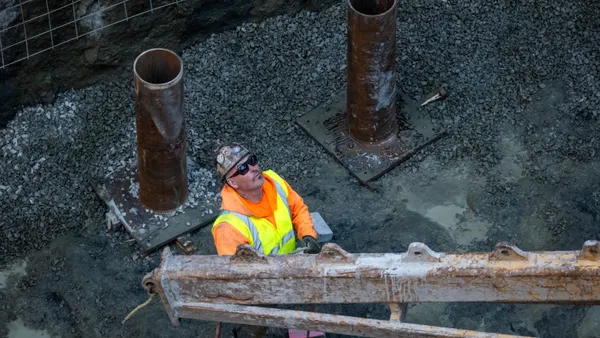Dive Brief:
- Construction employment increased in 39 states between November and December, the Associated General Contractors of America reported, with 44 states and Washington, DC, adding construction jobs for the full year 2015.
- California (11,200 jobs, 1.5%) delivered the largest November-to-December job gains, while West Virginia (2,700 jobs, 9.9%) saw the highest month-to-month percentage increase, the AGC reported. However, once again, Pennsylvania (-2,500 jobs, -1.1%) lost the most jobs from November to December, and Wyoming (-1.7%, -400 jobs) lost the highest percentage month-to-month.
- In addition to its leading position on month-to-month construction employment numbers, California (59,300 jobs, 8.6%) added the most construction jobs for the full year 2015, while Hawaii (4,800 jobs, 15.5%) added the highest percentage. Of the six states that lost jobs between 2014 and 2015, North Dakota (-8.1%,-3,000 jobs) lost both the most jobs and the highest percentage.
Dive Insight:
Job losses, according to the AGC, could be related to the softening of energy-producing economies, given that many of the employment declines for the full year 2015 occurred in those states.
"Construction employment expanded in most parts of the country last year as demand for new projects rebounded," AGC CEO Stephen E. Sandherr said in a statement. "The question now is whether declining energy prices will impact construction employment in a larger part of the country this year."
AGC officials also said that although the substantial number of states adding jobs last year means that construction companies are finding a way to meet skilled labor demand, there are still workforce shortages. This fact, combined with increasing regulatory requirements and the possible impact of low energy prices, could herald a different set of challenges in 2016.
For some time now, the AGC’s position on the skilled labor shortage has been one of cautious optimism. While October, November and December have yielded significant job gains, if those figures are skewed because of energy workers coming over to the construction industry, there’s a limited number of those employees. After their numbers dwindle, the industry still must fill a significant gap in the face of an aging workforce and fewer young people in the construction employment pipeline.










